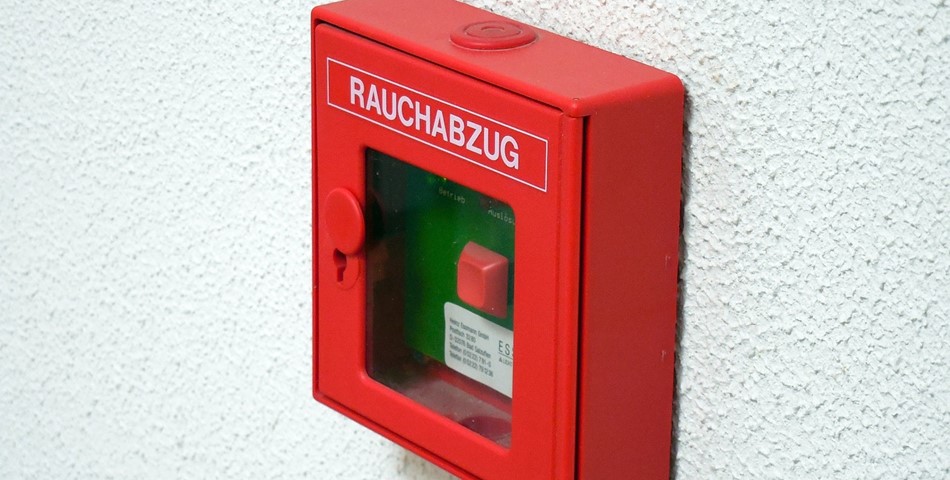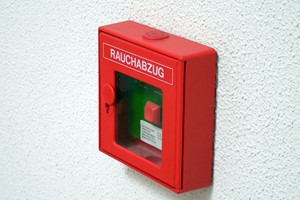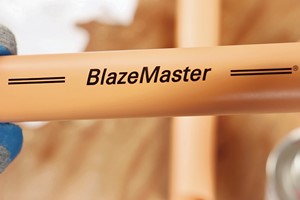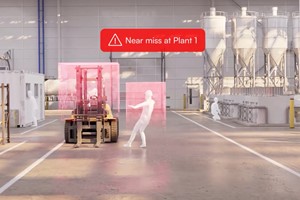In recent years, there has been a growing concern about fire safety in older buildings. As these structures age, their fire safety systems become outdated and may not comply with the latest regulations. Retrofitting fire safety systems is crucial to ensure the safety of occupants and comply with legal requirements.
Retrofitting Fire Safety Systems for Older Buildings Ensuring Safety and Compliance
In this article, we will explore the importance of retrofitting fire safety systems in older buildings and discuss the key considerations to effectively modernize these systems.
The Dangers of Outdated Fire Safety Systems
Older buildings often have fire safety systems that were installed decades ago when the building codes and standards were different. These outdated systems may lack essential features and capabilities to detect and mitigate fires effectively. Some of the dangers associated with outdated fire safety systems include:
- Limited detection capabilities: Older buildings may have outdated smoke detectors that are less sensitive to smoke or heat, leading to delayed fire detection.
- Inadequate alarm systems: Insufficient or malfunctioning alarm systems can result in delayed or failed evacuation, putting occupants' lives at risk.
- Obsolete suppression systems: Outdated fire suppression systems, such as sprinklers, may not be optimally designed for the building's layout, potentially hampering their effectiveness in extinguishing fires.
- Lack of emergency communication: Without modern communication systems, it becomes challenging to notify occupants about the presence of a fire and provide them with timely instructions for safe evacuation.
Given these risks, retrofitting fire safety systems in older buildings becomes imperative to enhance the level of protection and bring them in line with current safety standards.
Key Considerations for Retrofitting Fire Safety Systems
Retrofitting fire safety systems in older buildings necessitates careful considerations for effectiveness and compliance. A thorough fire risk assessment is essential before initiating the retrofitting process to identify potential hazards and evaluate existing safety systems. This assessment guides improvements in specific areas and systems.
Alignment with current building codes and standards is paramount. Collaboration with local authorities and fire safety experts ensures compliance with the latest regulations, encompassing fire alarm, detection, and suppression system requirements.
The installation of advanced fire detection and alarm systems is crucial for early intervention. This involves deploying sensitive devices like smoke detectors, heat sensors, and flame detectors to promptly alert occupants and emergency services.
Efficient fire suppression systems, such as modernized sprinklers tailored to specific hazard areas, maximize their effectiveness. This minimizes potential damage and offers targeted fire suppression.
A reliable emergency communication system is vital for effective coordination during a fire emergency. Integrating features like public address systems, voice evacuation systems, and visual alerts facilitates clear communication and a well-coordinated emergency response.
The Benefits and Key Takeaways
Retrofitting fire safety systems in older buildings yields various benefits, ensuring compliance with safety regulations. Enhanced occupant safety is achieved through modernized systems, facilitating early detection, swift evacuation, and effective fire suppression. This reduces the risk to lives and property. Upgraded systems minimize property damage by identifying and suppressing fires at their onset. Legal compliance is assured, meeting current building codes and standards, mitigating liabilities for owners.
The enhanced safety measures contribute to increased property value, attracting tenants and buyers. While there's an initial investment, long-term cost savings result from reduced maintenance and insurance premiums, preventing significant fire-related losses. In conclusion, retrofitting is crucial for older buildings, addressing outdated systems and prioritizing safety and compliance.
Exploring Integrated Approaches to Retrofit Fire Safety Systems and Boost Energy Efficiency
Traditional fire safety systems have traditionally centered on fire prevention and containment, crucial yet insufficient given the escalating energy consumption demands. The integration of fire safety systems with energy-efficient solutions offers multifaceted advantages:
- Enhanced Safety: Integrated systems provide superior early detection mechanisms, enabling swift responses to fire incidents. Simultaneously monitoring energy usage allows for proactive maintenance, mitigating potential risks effectively.
- Cost Savings: Retrofitting existing fire safety systems with energy-efficient components yields substantial savings on utility bills and reduces the environmental footprint. This dual approach not only enhances safety but also promotes financial prudence.
- Improved Efficiency: Integrated systems optimize energy usage, resulting in heightened operational efficiency. Businesses can identify energy-intensive processes, implement measures to streamline operations, and enhance overall productivity.
- Regulatory Compliance: Stringent regulations mandate businesses to uphold fire safety measures and energy efficiency standards. Embracing integrated approaches ensures organizational compliance, safeguarding against penalties and legal repercussions.
By marrying fire safety with energy efficiency, businesses can fortify their operations, achieving a harmonious blend of safety, sustainability, and cost-effectiveness.
Key Features of Integrated Retrofit Solutions
Integrated fire safety systems with energy-efficient solutions offer numerous benefits. Smart sensors, armed with advanced fire detection algorithms, swiftly identify hazards. These sensors integrate with building management systems, triggering alarms, evacuation processes, and notifying emergency services. Modern building automation systems facilitate real-time monitoring of energy consumption, allowing businesses to identify and rectify wastage.
Energy-efficient lighting, such as LED fixtures, reduces power consumption and maintenance costs. Retrofitting HVAC systems with smart, energy-efficient components optimizes temperature control, leading to substantial energy savings.
Industry statistics underscore the significance of integrated solutions. U.S. industrial property fires caused $2 billion in direct damage in 2019. The U.S. Department of Energy indicates that integrating fire safety and energy-efficient solutions can cut commercial building energy consumption by up to 30%. In a Californian office building case study, retrofitting the fire safety system resulted in 20% annual energy bill savings and a 15% reduction in carbon emissions.
Maximizing Energy Efficiency While Retrofitting Fire Safety Systems: Innovative Solutions
Retrofitting fire safety systems offers benefits such as improved detection, compliance with regulations, enhanced occupant safety, and increased property value. However, integrating energy efficiency into the retrofitting process is crucial for additional advantages.
Energy efficiency is vital in sustainable building practices, playing a key role in reducing carbon emissions and conserving resources. Buildings contribute significantly to global energy consumption (40%), impacting greenhouse gas emissions and environmental degradation. Enhancing energy efficiency can cut building energy consumption by up to 30%, leading to substantial cost savings and environmental benefits. Balancing fire safety with energy efficiency creates safer, more sustainable structures for the future.
Innovative Solutions for Maximizing Energy Efficiency
Smart fire detection systems, such as intelligent smoke detectors, bring a significant boost to energy efficiency. These devices employ advanced sensors and algorithms to distinguish between real threats and false alarms, curbing unnecessary energy consumption from emergency lighting and ventilation systems. Integration with building management systems facilitates optimized control, further trimming overall energy usage.
Energy-efficient emergency lighting is pivotal for safe evacuations during fire incidents. LED emergency lighting, in contrast to traditional options, consumes markedly less energy. Smart lighting control systems add an extra layer of efficiency by automatically adjusting emergency lighting levels based on building occupancy, contributing to additional energy savings.
Upgrading to high-efficiency sprinkler systems with optimized nozzle designs and hydraulic calculations brings forth multiple energy-saving advantages. This includes reduced water consumption due to enhanced distribution patterns and minimized energy usage for water pumping and pressurization, translating to long-term cost savings.
The integration of fire safety systems with building automation systems centralizes control, fostering energy optimization. Synchronized operation with other building systems, such as HVAC and lighting, diminishes redundant energy usage. Advanced monitoring and analytics capabilities enable continuous refinement of energy consumption, establishing a holistic approach to energy-efficient fire safety.
Edited by Yehya Aoun














